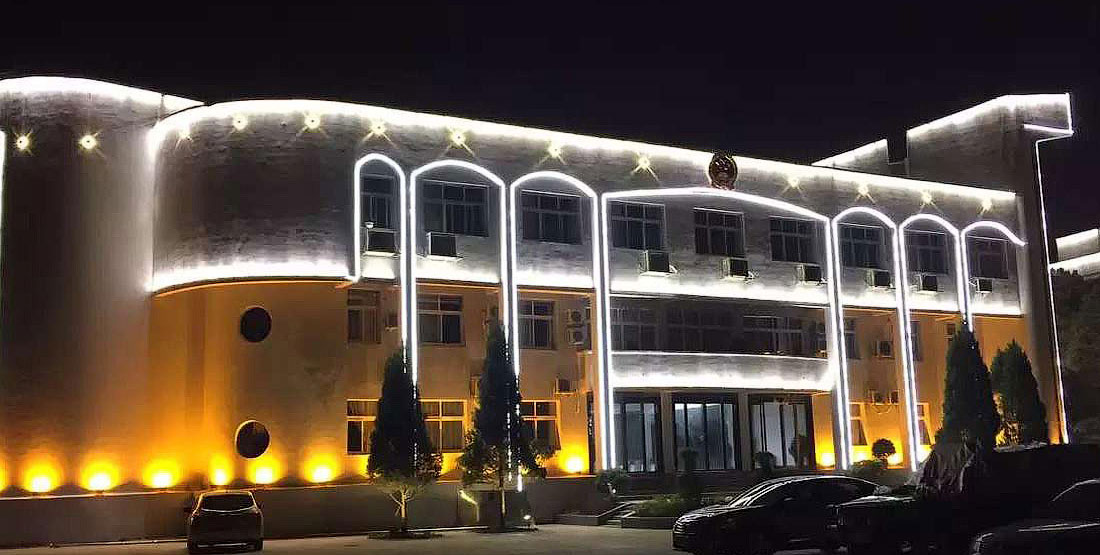LED strip lights have become increasingly popular for various applications, from illuminating buildings and creating dazzling lighting patterns to enhancing indoor entertainment spaces and home landscaping. These versatile lights can be divided into two categories based on their voltage: high voltage LED strip lights and low voltage 12V/24V LED strip lights.
>>> Follow us to discove BLLS
High-Voltage LED Strip Lights
High-voltage LED strip lights, also known as AC soft light strips, are powered by alternating current. With voltage options such as AC110V/230V/240V, they offer a unique lighting experience. These lights are created by injecting PVC plastic into a PCB board, resulting in a sturdy strip with independent copper or alloy wires on both sides to supply power. The high-quality versions of these strips have a clean and transparent appearance, while the inferior ones might appear grayish-yellow and lack softness. Additionally, high-voltage LED strips are typically sleeved and have a waterproof rating of at least IP67.

Low-Voltage LED Strip Lights
On the other hand, low-voltage LED strip lights are powered by DC 12V/24V and are also referred to as DC LED strip lights. These strips feature a flexible PCB board with integrated power lines due to their lower voltage requirements. As a result, they lack the double-alloy wires found in high-voltage strips. One key advantage of low-voltage LED strips is their versatility in terms of waterproofing options. They can be made with various processes, including non-waterproof (IP20), epoxy dustproof (IP54), casing rainproof (IP65), casing filling (IP67), and full drainage (IP68).
>>> Follow us to discove Best led light strips
The Key Differences
While both high-voltage and low-voltage LED strip lights offer similar lighting effects, there are some noteworthy distinctions. The main difference lies in their appearance and power supply structure. High-voltage strips use PCB boards and PVC plastic, while low-voltage strips have integrated power lines on flexible PCB boards. Moreover, high-voltage strips tend to have higher transparency and better overall aesthetics.
In summary, the choice between high-voltage and low-voltage LED strip lights depends on personal preferences and specific lighting requirements. Both options offer unique benefits, and understanding their differences can help you make an informed decision when it comes to illuminating your surroundings.

FAQs
1. What are high-voltage and low-voltage LED strip lights, and how do they differ?
High-voltage LED strip lights operate at 120V or 240V, while low-voltage LED strip lights typically operate at 12V or 24V. The primary difference is the voltage they use for power.
2. What are the advantages of high-voltage LED strip lights?
High-voltage LED strips are more energy-efficient over longer distances, as they have less voltage drop. They are also easier to install without the need for a power supply every few meters.
3. What are the advantages of low-voltage LED strip lights?
Low-voltage LED strips are safer for DIY installations due to their lower voltage, and they offer more flexibility in terms of customization, as they can be cut to smaller lengths.
4. Are high-voltage LED strip lights brighter than low-voltage ones?
Not necessarily. The brightness of LED strip lights depends on the LEDs’ specifications and the number of LEDs per unit length, rather than the voltage.
5. Can I connect high-voltage and low-voltage LED strip lights together?
It’s generally not recommended to directly connect high-voltage and low-voltage LED strips together, as they operate at different voltages and require separate power supplies.
6. Are high-voltage LED strip lights suitable for outdoor use?
Yes, high-voltage LED strips are often more suitable for outdoor use due to their ability to cover longer distances without voltage drop. They are available in waterproof and outdoor-rated options.
7. Can I dim both high-voltage and low-voltage LED strip lights?
Yes, both high-voltage and low-voltage LED strip lights can be dimmed using compatible dimmers or controllers designed for their respective voltage levels.
8. Do high-voltage LED strip lights require special installation considerations?
High-voltage LED strips should be installed by a licensed electrician in accordance with local electrical codes. They may require conduit or protective enclosures for safety.
9. Are low-voltage LED strip lights easier to install for DIY enthusiasts?
Yes, low-voltage LED strip lights are generally easier and safer for DIY installations due to their lower voltage, making them a popular choice for home projects.
